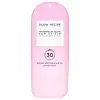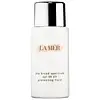What's inside
What's inside
 Key Ingredients
Key Ingredients

 Benefits
Benefits

 Concerns
Concerns

 Ingredients Side-by-side
Ingredients Side-by-side

Butyl Methoxydibenzoylmethane 3%
UV AbsorberHomosalate 7%
Skin ConditioningEthylhexyl Salicylate 5%
UV AbsorberWater
Skin ConditioningButyloctyl Salicylate
Skin ConditioningDiisopropyl Adipate
EmollientOleyl Erucate
EmollientNiacinamide
SmoothingGlycerin
HumectantCetearyl Alcohol
EmollientDiheptyl Succinate
EmollientAmmonium Polyacryloyldimethyl Taurate
Emulsion StabilisingPhenoxyethanol
PreservativeCoco-Glucoside
CleansingCapryloyl Glycerin/Sebacic Acid Copolymer
Skin ConditioningGlycine Soja Oil
EmollientXylitylglucoside
HumectantHydroxyacetophenone
AntioxidantTocopherol
AntioxidantAnhydroxylitol
HumectantParfum
MaskingCitrullus Lanatus Seed Oil
EmollientPongamia Pinnata Seed Extract
Skin ConditioningPolyglyceryl-3 Diisostearate
EmulsifyingXylitol
HumectantEthylhexylglycerin
Skin ConditioningHyaluronic Acid
HumectantOryza Sativa Extract
AbsorbentOryza Sativa Germ Extract
EmollientSodium Phytate
Glucose
HumectantHydrogenated Palm Glycerides Citrate
EmollientButyl Methoxydibenzoylmethane 3%, Homosalate 7%, Ethylhexyl Salicylate 5%, Water, Butyloctyl Salicylate, Diisopropyl Adipate, Oleyl Erucate, Niacinamide, Glycerin, Cetearyl Alcohol, Diheptyl Succinate, Ammonium Polyacryloyldimethyl Taurate, Phenoxyethanol, Coco-Glucoside, Capryloyl Glycerin/Sebacic Acid Copolymer, Glycine Soja Oil, Xylitylglucoside, Hydroxyacetophenone, Tocopherol, Anhydroxylitol, Parfum, Citrullus Lanatus Seed Oil, Pongamia Pinnata Seed Extract, Polyglyceryl-3 Diisostearate, Xylitol, Ethylhexylglycerin, Hyaluronic Acid, Oryza Sativa Extract, Oryza Sativa Germ Extract, Sodium Phytate, Glucose, Hydrogenated Palm Glycerides Citrate
Water
Skin ConditioningButyloctyl Salicylate
Skin ConditioningMethyl Trimethicone
Skin ConditioningNeopentyl Glycol Diheptanoate
EmollientAleurites Moluccanus Seed Oil
Skin ConditioningLauryl PEG-9 Polydimethylsiloxyethyl Dimethicone
Skin ConditioningPEG-100 Stearate
Butylene Glycol
HumectantGlyceryl Stearate
EmollientDipentaerythrityl Tri-Polyhydroxystearate
EmollientPotassium Cetyl Phosphate
EmulsifyingAlgae Extract
EmollientSesamum Indicum Seed Oil
EmollientMedicago Sativa Seed Powder
Skin ConditioningHelianthus Annuus Seedcake
AbrasivePrunus Amygdalus Dulcis Seed Meal
AbrasiveEucalyptus Globulus Leaf Oil
PerfumingSodium Gluconate
Skin ConditioningCopper Gluconate
Skin ConditioningCalcium Gluconate
HumectantMagnesium Gluconate
Skin ConditioningZinc Gluconate
Skin ConditioningTocopheryl Succinate
AntioxidantNiacin
SmoothingSesamum Indicum Seed Powder
Skin ConditioningLaminaria Ochroleuca Extract
Skin ConditioningMalachite
Skin ConditioningCaffeine
Skin ConditioningSorbitol
HumectantSodium Hyaluronate
HumectantCetyl Alcohol
EmollientStearic Acid
CleansingVp/Eicosene Copolymer
Ethylhexylglycerin
Skin ConditioningSaccharide Isomerate
HumectantCaprylic/Capric Triglyceride
MaskingCaprylyl Glycol
EmollientAmmonium Acryloyldimethyltaurate/Vp Copolymer
Dehydroxanthan Gum
Emulsion StabilisingSodium Dehydroacetate
PreservativeCitric Acid
BufferingTourmaline
Styrene/Acrylates Copolymer
Silica
AbrasivePEG-8 Laurate
EmulsifyingParfum
MaskingDisodium EDTA
Phenoxyethanol
PreservativeLimonene
PerfumingGeraniol
PerfumingHydroxycitronellal
PerfumingLinalool
PerfumingCitronellol
PerfumingMica
Cosmetic ColorantCI 61570
Cosmetic ColorantCI 77891
Cosmetic ColorantWater, Butyloctyl Salicylate, Methyl Trimethicone, Neopentyl Glycol Diheptanoate, Aleurites Moluccanus Seed Oil, Lauryl PEG-9 Polydimethylsiloxyethyl Dimethicone, PEG-100 Stearate, Butylene Glycol, Glyceryl Stearate, Dipentaerythrityl Tri-Polyhydroxystearate, Potassium Cetyl Phosphate, Algae Extract, Sesamum Indicum Seed Oil, Medicago Sativa Seed Powder, Helianthus Annuus Seedcake, Prunus Amygdalus Dulcis Seed Meal, Eucalyptus Globulus Leaf Oil, Sodium Gluconate, Copper Gluconate, Calcium Gluconate, Magnesium Gluconate, Zinc Gluconate, Tocopheryl Succinate, Niacin, Sesamum Indicum Seed Powder, Laminaria Ochroleuca Extract, Malachite, Caffeine, Sorbitol, Sodium Hyaluronate, Cetyl Alcohol, Stearic Acid, Vp/Eicosene Copolymer, Ethylhexylglycerin, Saccharide Isomerate, Caprylic/Capric Triglyceride, Caprylyl Glycol, Ammonium Acryloyldimethyltaurate/Vp Copolymer, Dehydroxanthan Gum, Sodium Dehydroacetate, Citric Acid, Tourmaline, Styrene/Acrylates Copolymer, Silica, PEG-8 Laurate, Parfum, Disodium EDTA, Phenoxyethanol, Limonene, Geraniol, Hydroxycitronellal, Linalool, Citronellol, Mica, CI 61570, CI 77891
Ingredients Explained
These ingredients are found in both products.
Ingredients higher up in an ingredient list are typically present in a larger amount.
Butyloctyl Salicylate is a chemical UV filter structurally similar to octisalate. It is a photostabilizer, SPF booster, emollient and solvent. This ingredient helps evenly spread out ingredients.
According to a manufacturer, it is suitable for pairing with micro Titanium Dioxide, Zinc Oxide, and pigments.
Photostabilizers help stabilize UV-filters and prevents them from degrading quickly.
Learn more about Butyloctyl SalicylateEthylhexylglycerin (we can't pronounce this either) is commonly used as a preservative and skin softener. It is derived from glyceryl.
You might see Ethylhexylglycerin often paired with other preservatives such as phenoxyethanol. Ethylhexylglycerin has been found to increase the effectiveness of these other preservatives.
Parfum is a catch-all term for an ingredient or more that is used to give a scent to products.
Also called "fragrance", this ingredient can be a blend of hundreds of chemicals or plant oils. This means every product with "fragrance" or "parfum" in the ingredients list is a different mixture.
For instance, Habanolide is a proprietary trade name for a specific aroma chemical. When used as a fragrance ingredient in cosmetics, most aroma chemicals fall under the broad labeling category of “FRAGRANCE” or “PARFUM” according to EU and US regulations.
The term 'parfum' or 'fragrance' is not regulated in many countries. In many cases, it is up to the brand to define this term.
For instance, many brands choose to label themselves as "fragrance-free" because they are not using synthetic fragrances. However, their products may still contain ingredients such as essential oils that are considered a fragrance by INCI standards.
One example is Calendula flower extract. Calendula is an essential oil that still imparts a scent or 'fragrance'.
Depending on the blend, the ingredients in the mixture can cause allergies and sensitivities on the skin. Some ingredients that are known EU allergens include linalool and citronellol.
Parfum can also be used to mask or cover an unpleasant scent.
The bottom line is: not all fragrances/parfum/ingredients are created equally. If you are worried about fragrances, we recommend taking a closer look at an ingredient. And of course, we always recommend speaking with a professional.
Learn more about ParfumPhenoxyethanol is a preservative that has germicide, antimicrobial, and aromatic properties. Studies show that phenoxyethanol can prevent microbial growth. By itself, it has a scent that is similar to that of a rose.
It's often used in formulations along with Caprylyl Glycol to preserve the shelf life of products.
Water. It's the most common cosmetic ingredient of all. You'll usually see it at the top of ingredient lists, meaning that it makes up the largest part of the product.
So why is it so popular? Water most often acts as a solvent - this means that it helps dissolve other ingredients into the formulation.
You'll also recognize water as that liquid we all need to stay alive. If you see this, drink a glass of water. Stay hydrated!
Learn more about Water